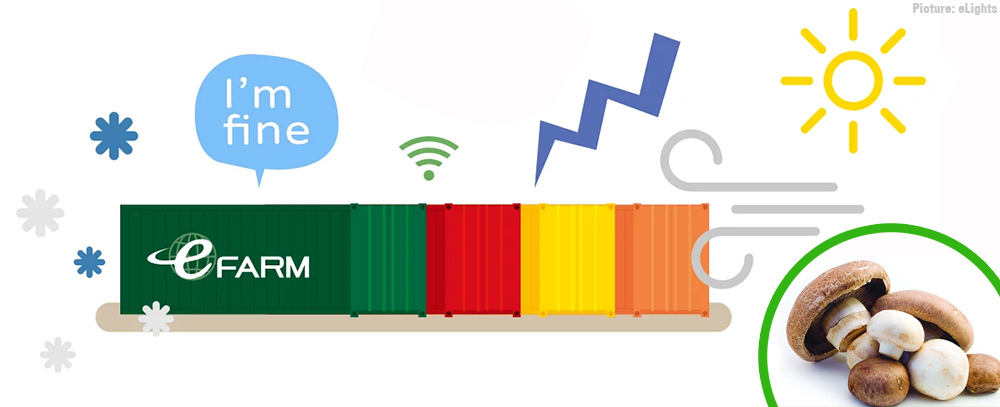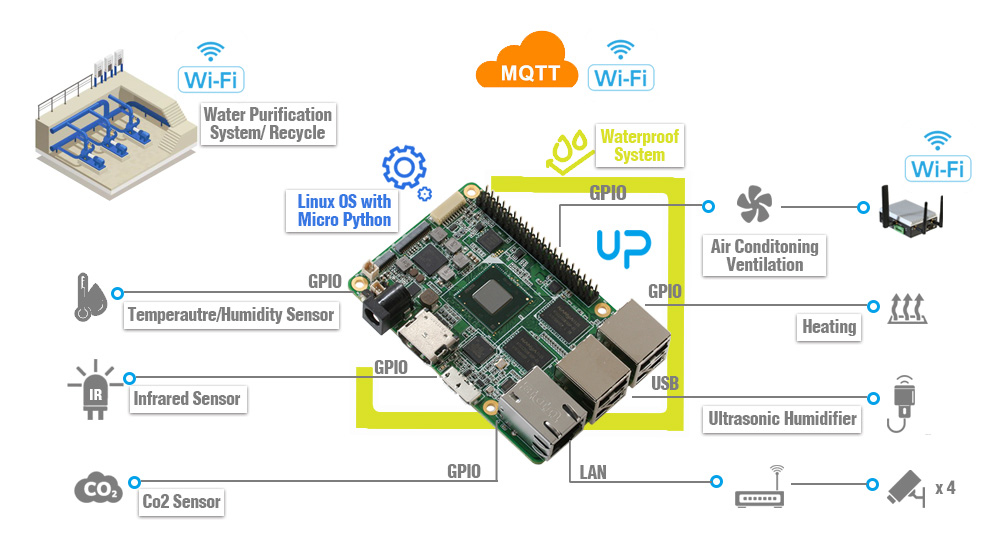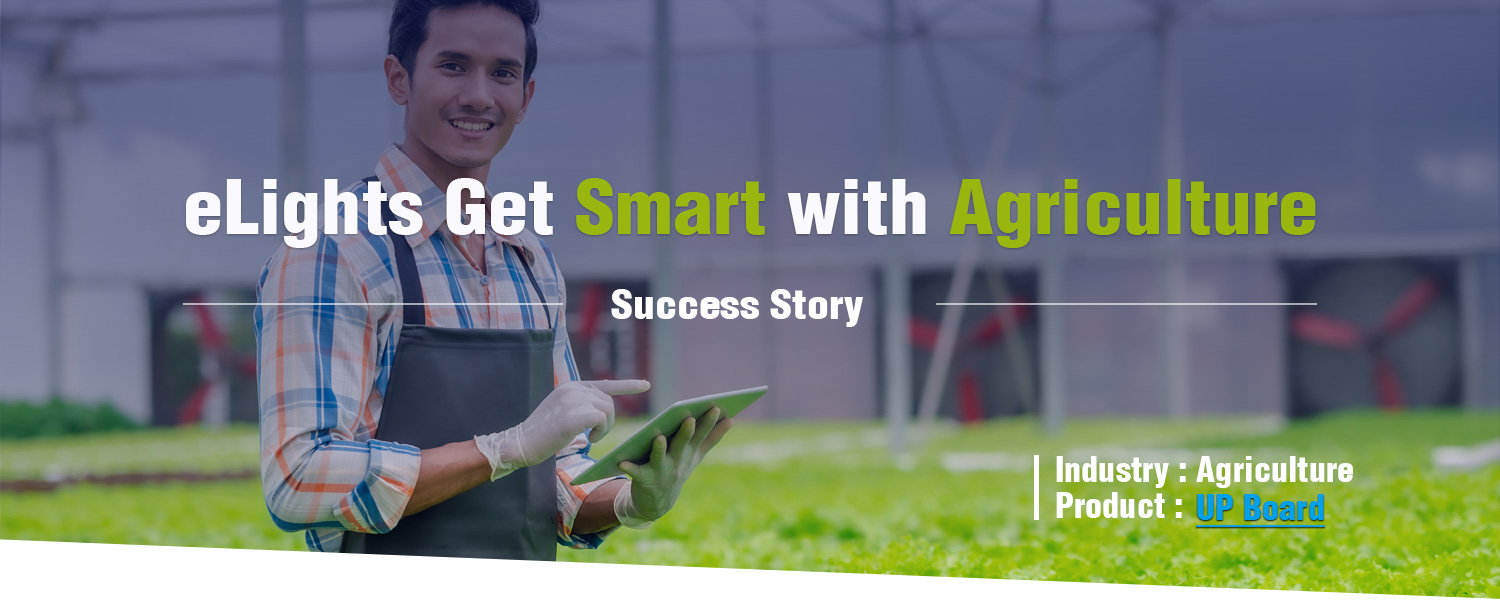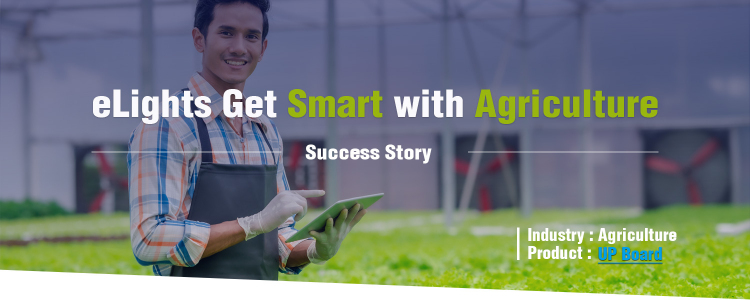eLights get Smart with Agriculture
With the help of the UP Developer Board, a Taiwan-based farm simplified smart agricultural innovation.
Smart Agriculture is a very broad umbrella term encompassing a number of different applications, just as agriculture generally covers a broad range of activities, from cultivating produce to livestock and dairy farming. In line with other industries, there has been considerable interest in how recent advancements in AI technology could facilitate innovation in the agricultural sector. Precision farming, for example, has made great progress in introducing applications capable of livestock tracking, irrigation management, and crop growth data analysis to the sector.
However, smart technology does not always have to be so complex. At times, integrating smart features into existing agricultural practices can be most beneficial for farmers, primarily due to the compatibility of said features with the farmer’s expert knowledge on the subject.

A Taiwan-based company, eLights Agricultural Science & Technology Co., had the idea of the Mobile Growth Environment Control System; a smart, self-sustaining container in which to grow mushrooms. The aim of this was to reduce the manpower costs associated with traditional farming, the expense of space required for successful crops and a more precise means of ensuring a quality product.
Challenges

Manpower
One of the biggest challenges in agriculture is the human and agrarian capital required for large-scale production. For farms seeking to produce significant volumes of produce, all of the work could not be managed by just one person, which introduces challenges to success.
There are labor and administrative costs associated with taking on employees, so this is always a factor for consideration in a business with slim profit margins. There are foods that require less demanding maintenance regimes, legumes, for example. However, as a general rule it is very demanding to grow and produce crops in volume, and often requires considerable upfront investment along with the knowledge, labor, and maintenance required.
Environmental Threats
There are also environmental factors to consider, with adverse weather events littering history, all of which have been followed by an economic knock-on effect where the agricultural sector is concerned.
Weather can be incredibly unreliable, causing floods and droughts, either of which can economically cripple a farming operation. This is particularly true for Taiwan, where the weather conditions often see heavy, yet intermittent rains hit during early spring and late summer, followed by scorching summer heat and typhoon season later in the year. As such, it is difficult to insure against adverse weather events causing significant damage to a farm’s profit margins.
Solution/Why AAEON

Self-sustaining Technology
By choosing the UP Developer Board with Intel® Atom™ x5-Z8350 Processor SoC, eLights were able to power their Mobile Growth Environment Control System. The idea behind this was that instead of growing their mushroom crop the traditional way, a system powered by the UP Board is set up in a mobile container, which is then self-sustaining for the duration of the crop’s growth.
With the UP Board’s excellent expansion capabilities, its 40 pin General Purpose bus was able to equip the Mobile Growth Environment Control System container with 6 rotational IP cameras, along with sensors to monitor factors such as humidity, temperature, and water supply. This data would then be transferred to eLights’ AI software to determine and configure the optimal growth conditions for the mushrooms. The biggest benefit to this is that the containers are entirely self-sustaining, with the farmer being able to view, record, or alter any of the conditions within the container remotely via a mobile app.

Environmentally Protected
The crop is grown in an enclosed space, and so the environmental factors previously noted are moot. Because the container is climate controlled, with water and humidity levels monitored via sensors connected to the UP Board’s 40 pin General Purpose bus, organic environmental factors are not able to impact the crop.
Additionally, the conditions cultivated within the container will not affect the UP Board’s performance, given its rugged build. Boasting an operating temperature of 0°C ~ 60°C, along with being able to operate within up to 80% relative humidity, the diminutive hardware is the ideal board for deployment in a mobile and dynamic application.
Additional Benefit – Low Cost Connectivity
Because the UP Board was designed to bridge the gap between industrial and consumer access to AI Edge technology, it is a very economic choice for a small or medium enterprise, such as a farm. Given this, the UP Board provided eLight with extremely high CPU value, while also cutting down on the aforementioned labor and maintenance costs. Further to this, the running costs of the containers were minimal, with the container maintaining very low power consumption while running, at 3-4 watts.
The modus operandi of connection that the UP Board has with other aspects of the application is also a huge benefit to prospective customers. In order to apply AI applications to agriculture, there is no longer a need to rely on long distance data transmission methods, such as CAT-M1 or LoRA, due to the prevalence of existing wireless architecture. As such, smart technology can now be as accessible to agricultural institutions as any other, by taking advantage of infrastructure already in place.


